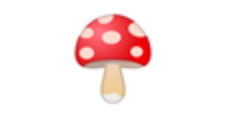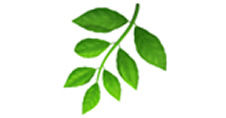Foraging includes not only wild plants, fruits, berries, mushrooms, etc., but also digging for sea life including clams, oysters, shellfish, etc. Plucking a juicy cherry tomato fresh from the vine in your garden is a form of foraging, although of course, cultivated plants are not wild. Hunting and fishing aren’t quite the same as foraging as they require equipment and skills, but the end result is the same—fresh wild caught calories and nutrition.
EDUCATION, EDUCATION, EDUCATION (AND LOCATION, LOCATION, LOCATION)
Yes, there is a thing called mycophobia. Some family members and friends thought I was crazy when I started to eat some of the wild mushrooms I harvested (after positive identification). My husband embraced the mushroom thing immediately and we are eating so much more excitedly and adventurously for it. I have gotten a number of friends totally jazzed about it, and profusely thank those friends of mine who planted the seeds of inquisitiveness and led me to my first positive identifications. All those years of mushrooms, mushrooms everywhere, and not a bite to take, because I just didn’t know. The key to successful foraging is education. There have always been a plethora of plant and mushroom identification books and texts out there, but the internet now offers logarithmically more. Websites (foraging.com is a good example) and YouTube videos can be extremely valuable, but caution must be exercised because there are a lot of self-proclaimed experts out there. Online plant or mushroom identification courses are available (although there are not many of these). Join an online club, especially in your geographic area, as it is extremely useful and especially validating when you score a big find -you can post photos— but nothing substitutes for the real thing. Join a live club or take a live course and go on outings. It is most reliable to have an expert positively identify a plant or mushroom, to be able to see it in its native environment, and to harvest it at the correct time of year. I will put a plug in for Learn Your Land with Adam Haritan. This is an excellently created and curated series of resources, videos (can access from YouTube), newsletter, etc. by an extremely knowledgeable and personable expert on foraging. Adam has very recently created a 4-season online course “Foraging Wild Mushrooms.” One caveat is that the course focuses on the eastern part of the US, most specifically western PA, but basic principles can be applied to other regions, and many species are similar if not the same across the country.
MAJOR FORAGING RULES:

Do not consume any plant or mushroom before it is positively identified and properly prepared; this means, in most cases, cooked. Eat only a small amount at first to make sure you can tolerate it.

Make sure you are not trespassing on someone’s property when picking wild plants.

Make sure foraging is allowed if you are on public lands such as in a park (sometimes a permit is required).

Don’t unnecessarily trample or otherwise perturb the surrounding environment when plucking that tasty or therapeutic morsel.
The following is a list of foraging resources to get you started, with no particular one endorsed over another. Parts 2 and 3 of this article will focus on some well-known edible and medicinal plants and mushrooms, their use in a wilderness setting, and toxic ones to avoid.
FORAGING BOOKS
I am a bit biased about the following three books because I took a foraging workshop with the buoyantly animated and inimitable Sam Thayer. The books have a terrific soup to nuts (actually, it’s nuts to soup!) introduction to foraging. Nature’s Garden introduction has a fascinating analysis of Into the Wild, of whether Chris McCandless did really starve from eating poisonous plants.